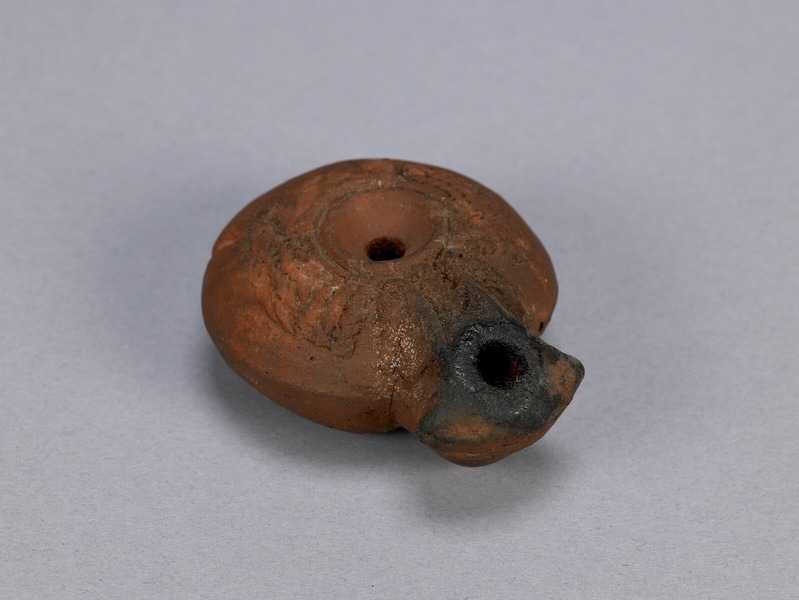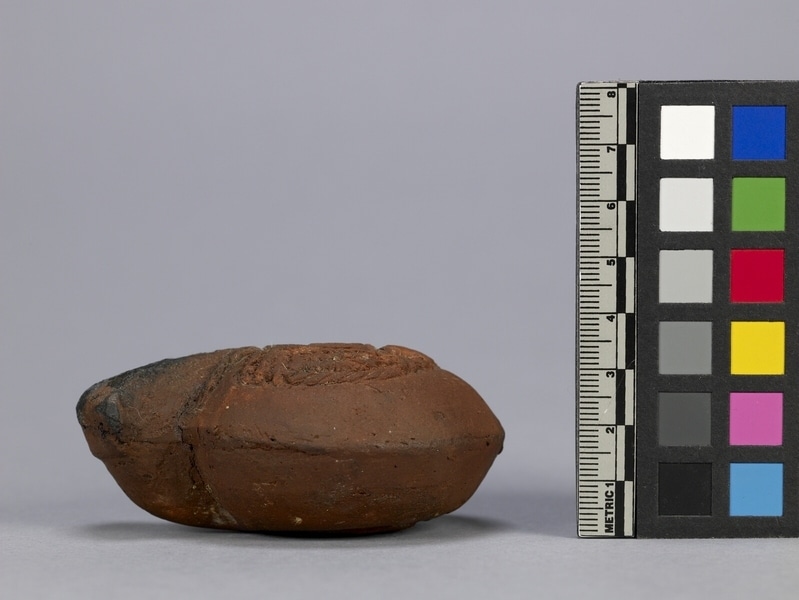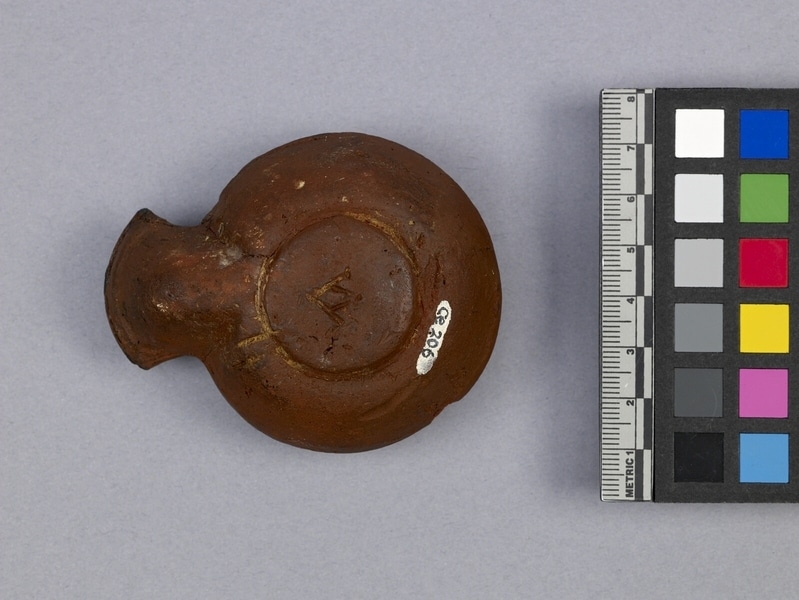Lamp Item Number: Ce206 from the MOA: University of British Columbia




Description
Moulded terra cotta oil lamp, with round disc-shaped body and small filling hole set in a concave recess. A nozzle extends from the body. The top is incised with short rows of herringbone design and there is a design resembling an animal's hind leg opposite the nozzle. There is a seam sealed around the outer edge of the lamp. On the bottom of the base is an incised circle with an inscription in the centre.
History Of Use
Beginning in the 3rd century B.C.E., Roman houses and public buildings were lit by small lamps made of terra cotta or bronze. Manufacture of these lamps formed a major portion of Roman pottery making. Most of these clay lamps were made from a two piece drain mould. After firing, they were slipped with various colours.
Cultural Context
Used for light.
Iconographic Meaning
Decorations on the surface and handles of Roman lamps are extremely varied, drawn from mythology and daily life. The inscription apparently contains the maker's name.
Item History
- Made in Rome, Italy
- Collected during 1848
- Owned by Walter Norrie
- Owned by Anthony A. Kingscote before September 11, 1978
- Received from Anthony A. Kingscote (Donor) on September 11, 1978
What
Who
- Culture
- Roman
- Previous Owner
- Walter Norrie and Anthony A. Kingscote
- Received from
- Anthony A. Kingscote (Donor)
Where
- Holding Institution
- MOA: University of British Columbia
- Made in
- Rome, Italy
When
- Collection Date
- during 1848
- Ownership Date
- before September 11, 1978
- Acquisition Date
- on September 11, 1978
Other
- Item Classes
- ceramics
- Condition
- fair
- Current Location
- Case 96
- Accession Number
- 0485/0009